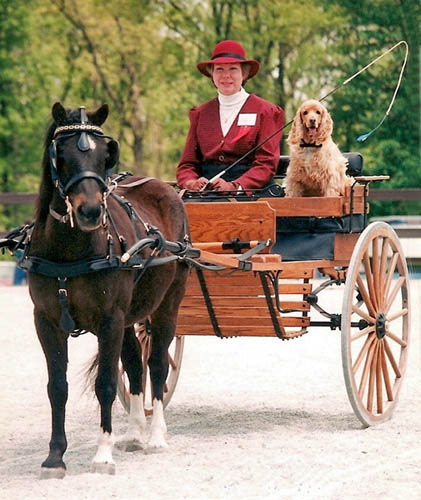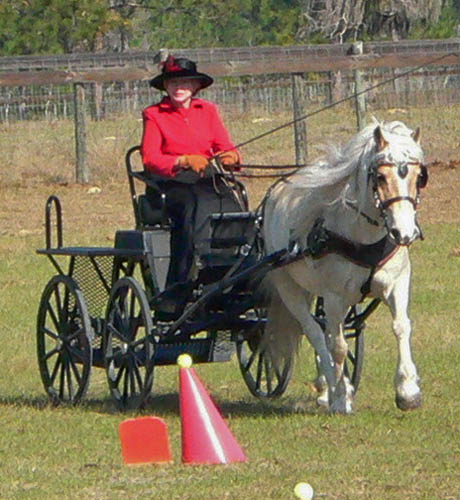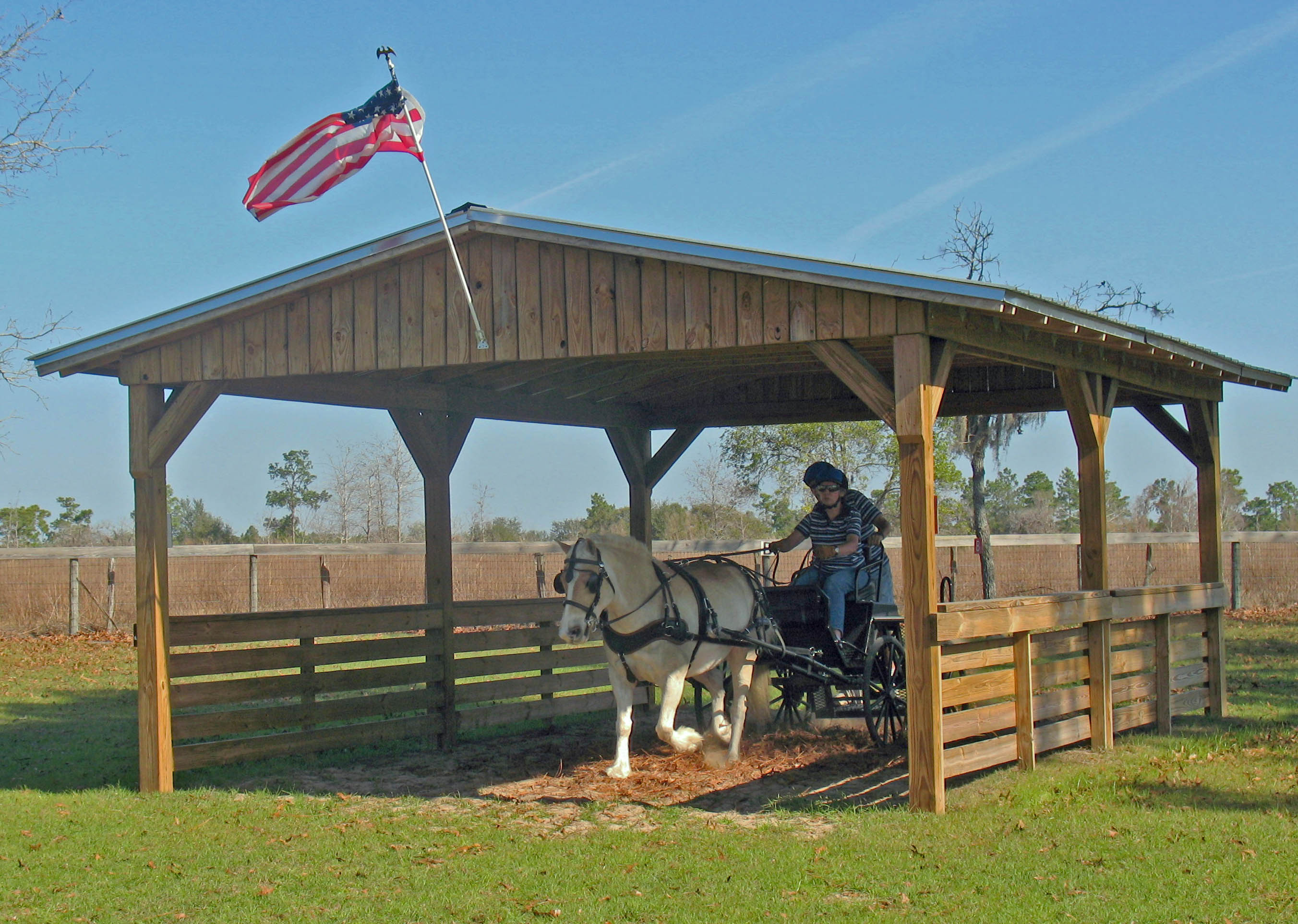So, You Think You Love Horses?
Some Reflections on the Nature of Horses and Man
More Discussions by “The Accidental Horseman”
Equestrian Sports and Activities: Driving
Going for a Drive

|
The modern driver finds the ride just as enjoyable.
Photo Courtesy of Joyce Clayton
|
| 
|
Phaeton, post chaise, surrey, park drag, jaunting car, barouche, growler, and lorry; at one time these terms would have been as familiar to people as words like minivan, sedan, compact or sports utility vehicle are to us today. Although you do not see very many horse-drawn vehicles on American’s roads now, it has not been that long ago that they were common. For example, my mother-in-law as a young farm girl drove a horse and buggy into town to go to school during the 1920s. Her father had an arrangement with the local livery stable and in the days before local school bus service it worked well. My own first memories of horses were urban ones. There were hucksters in Baltimore who were called Arabs, pronounced Ay’-rabs. They drove horse-drawn wagons through the alleys selling produce and all had distinctive cries which still echo in my memory. At the time these cries puzzled me because I had little idea just what they were saying in their African-American dialect that seemed to run an entire phase into one long, musical word. Who knows, if the price of gas goes up any more we may find ourselves doing this again.
Today, driving is a recreational activity. A friend is very active in the driving world and I have had nice rides in her cart. There comes a point it life where a vigorous horseback ride astride can leave you fatigued and achy, but driving is easier on the passenger and horse as well. She is a very skilled woodworker and has built or rebuilt the bodies of several carts. Her tack is beautifully made by Amish harness makers with whom she dealt directly. The people who drive have clubs, shows, and sponsor group drives for all kinds of wheeled vehicles. Combined Driving Events, the harness equivalent of three day eventing, is very popular in the driving world and features: dressage, marathon and cones classes. There are also trace paces and endurance
driving events.
There was another group that a friend belonged to that would run large wagon trains past our house and made family weekend trips with their club, camping at members' farms after a days run. They had outriders mounted on either end of the train with red flags and would wave motor vehicles past them when it was safe. There is also the elite of the driving world, the people who do coaching. They drive large and elegant coaches with teams of horses in competitive events. Needless to say, the bigger the vehicle and the more animals involved the larger the costs.
Driving a horse-drawn vehicle requires skills for both the human and equine. My horse is absolutely terrorized by the sight of a horse and wagon. He seems to think that the wagon is about to swallow the poor horse and that likely he will be next. It’s all I can do to calm him down. Horses need to be trained to drive properly, and the driver also needs to properly use the reins and maneuver the vehicle. Safety and a well-schooled horse are even more important when a horse is harnessed. If a mounted rider is thrown you only have a loose horse. If a harnessed horse panics and the driver is thrown from a carriage, you have the carriage flailing behind the animal and a very dangerous situation. Run away teams are as feared today as they were in any Western movie.
The vehicle and tack need proper maintenance. The larger the vehicle and the more horses involved the more complicated the process. Hobbyists need some type of trailer that holds both their horses and their driving vehicle.
Despooking a Driving Horse 19th Century Style
Today's Drivers often Attend Clinics

|
Although a person driving a horse technically has the right to be on public roads, in practice it is often difficult. Many operators of motor vehicles have no idea how to drive around horses or for that matter anything or anyone else on the road and in their path. My own worst experience while mounted was crossing a bridge with a school bus parked on the shoulder on the opposite side. When I started over the bridge I figured the situation was a safe one since the bus was not even moving, but the driver decided to open the door just as I drew along side of her and the mechanism emitted a loud blast of air that my horse had never heard before. In an instant he was making for the railing and I had visions of that famous horse at the Steel Pier in Atlantic City, New Jersey diving into the sea. I had witnessed that attraction as a child but had no intention of replicating the event, at least not without a sizable paying audience. With on-coming traffic in the opposite direction, I was able to stop him just short of the railing and thank God did not have my two seconds of glory. I am certain many veteran drivers of horse-drawn vehicles can tell similar stories. It is nice that there are off-road venues where people can drive unmolested by impatient motor vehicle operators.
A Driving Steeplechase
Photo Courtesy of Joyce Clayton

| 
|
Most any breed of horse might be used to drive but certain breeds are traditionally harness breeds or have characteristics or aptitudes that are good for driving. Our friend likes Haflingers, which she finds strong yet easy to manage and willing. Various other light horse breeds, draft horse breeds, mules and even donkeys are used for various kinds of driving. A lot depends on the type of vehicle you are using and your style of driving.
Its not your grandmother's driving.
(Photo courtesy of Margie Cox and John Cox)

|
The Accidental Horseman.
Back to Additional Discussions
Links to Other Sites regarding Horses
Back to Index Page






